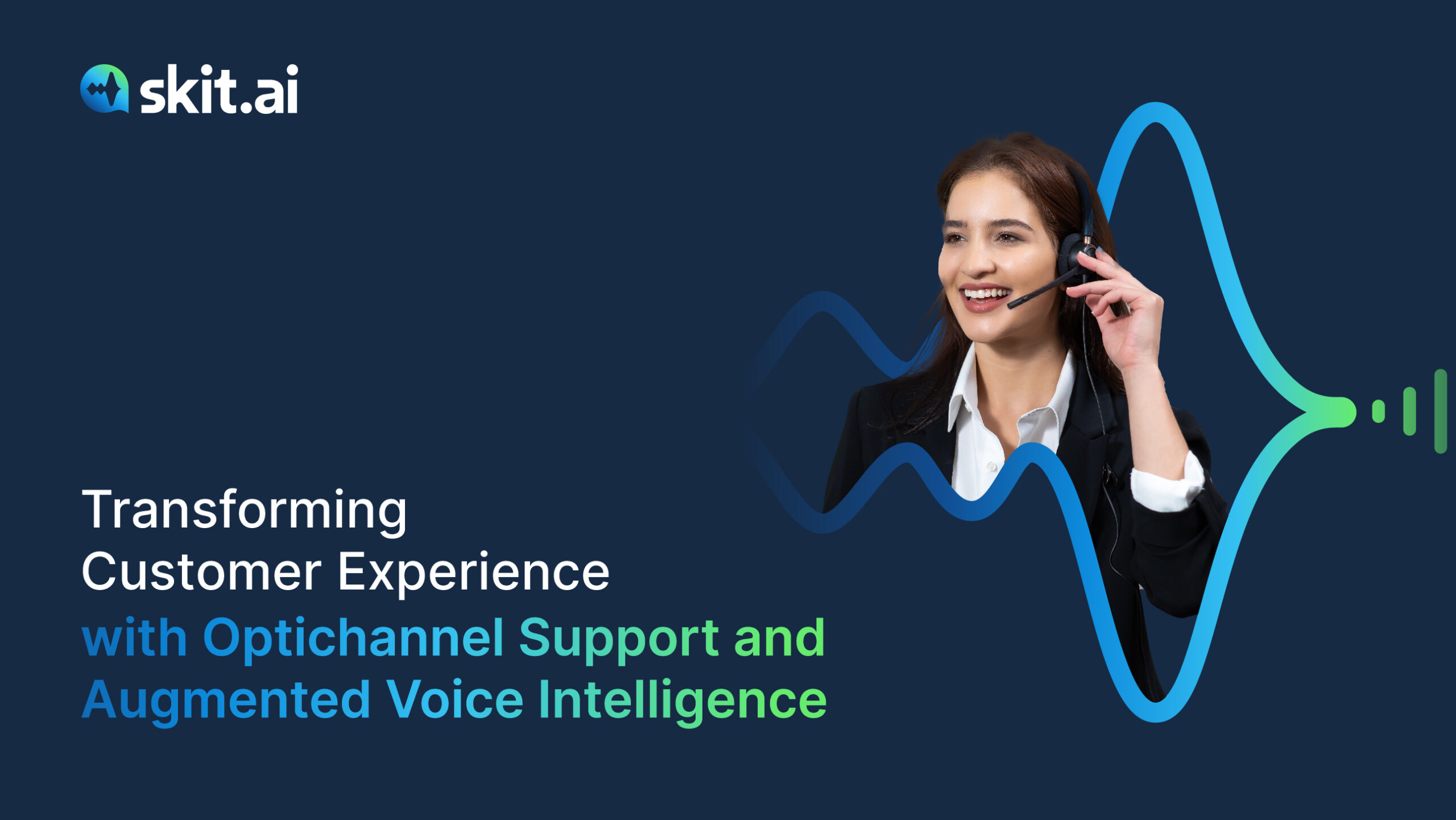Harshad Bajpai
July 4, 2022

Hello! Welcome to Skit.ai. Click here to book a demo.
July 4, 2022

We have all been in dire straits and dealt with frozen bank accounts and medical or travel emergencies. We can vividly recall the palpitation and frustration felt during those moments, waiting for customer support, navigating IVRs, or a chatbot.
Companies have long wanted to change it, but challenges such as high attrition rates, unscalable teams, inconsistent CX, and cost pressures have curtailed their capability to serve customers.
Consequently, customer frustration is on the rise. A 2019 report said that customers are annoyed by the irrelevant options presented by the IVR. In fact, two out of three Americans (66 percent) say they would choose AI-powered voice-over chat if it were effective at answering their questions.
Riding the wave of recent advancements in NLP and AI, we are graduating from machines automating crude, low-value tasks to a new era where AI-enabled voice customer support would help companies create enormous value, conversing in their preferred language with semantic understanding to resolve their problems.
Explore How to Improve Customer Experience With Voice AI
For Exceptional CX – Technology and Channel Strategy Matters
A Harvard Business Review survey revealed that 73% of business leaders view reliable customer experience as critical to the overall business performance of their company.
Companies now realize that multi-channel or omnichannel strategy has failed to live up to the expectations of improving CX, primarily because different customer segments prefer specific channels to connect. Thus, an optichannel or optimal channel strategy is more prudent as it focuses on the capability to support a customer journey via a channel/modality optimal for that problem.
Even today, after years of decline in customers’ preference for voice support to troubleshoot, voice is still over 50% in contact volume. Though companies may pursue an omnichannel strategy, if they are not good at voice support, they must be cognizant of its impact on CX. Optichannel is thus a more prudent strategy as being good at different modalities such as emails and chat will not compensate for the damage done by poor voice support. Companies have to choose wisely, there is no one-size-fits-all solution.
Text and Voice: Don’t Mix and Serve
Acing CX means that the company must be good at serving customers with their preferred channels. Voice is complex, subtle, and requires semantic understanding. Nuances of a voice conversation such as a change in the rate of speech, voice modulations, and more that convey a customer’s feelings are lost if your solution is not built from scratch for voice. Bundling a chatbot with a readily available Automated Speech Recognition (ASR) to add voice capability just kills the beauty of spoken conversations because it can transcribe but not converse.
Shortcuts like these fulfill notionally the goal of being present in every channel but defeat the goal of being good at the relevant channel.

Moving Beyond the Complexity of Digital Transformation with Voice AI
In the last few decades, the world moved from voice to text to chatbots. But as customers still prefer voice over other communication channels, even brands are taking notice. WhatsApp, a chat messaging platform, is building voice-led solutions for businesses. A Deloitte study reveals that by 2030 there will be a proliferation of voice-led technology across the globe and that 30% of sales will be via voice by then.
As companies hustle to achieve digital transformation, the low success rates, and disturbingly lower rates of sustainable DX success are proof of the precarious journey.
Fortunately, there is one way to not only automate contact centers with the most cutting-edge technology but also ensure that it succeeds without a big resource commitment from the organization. Yes, Voice AI is one such solution with stand-alone deployment and stunning success rates.
Companies must consider deploying Augmented Voice Intelligence for contact center automation as a good starting point toward digital transformation. But before that, brands must ponder over the most significant question – What does the shift towards voice entail as we cross the voice automation rubicon? What is its impact on the market and competitive landscape?
Look before you leap!
Only if you feel that your human agents are doing zero-value repetitive tasks, and there could be enhancement of their productivity. Your company is continuously facing resource, cost, and compliance challenges. Perhaps it’s time to contemplate and change.
For more information and free consultation, let’s connect over a quick call; Book Now!
Also, for more information: How We Can Transform Customer Experience
——————–
The field of AI is advancing rapidly, especially in large language models. Prominent models like GPT-3 and GPT-4 have impressive capabilities in generating coherent, human-like text. However, these models face a significant limitation: they rely solely on the data they were trained on, often leading to outdated or contextually incorrect information. As a result, the […]
You are ready to adopt a Conversational AI or Voice AI solution for your contact center, or you are in the process of adopting one—congratulations! Now is the time to think about integrations. In this article, we’ll discuss the benefits of integrating your Conversational AI platform with various tools and applications to transform your tech […]